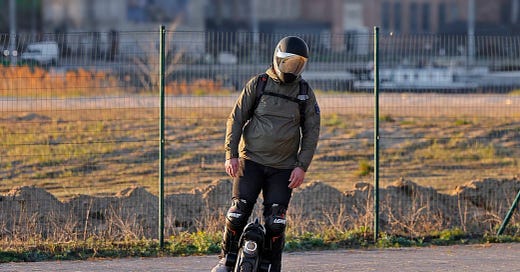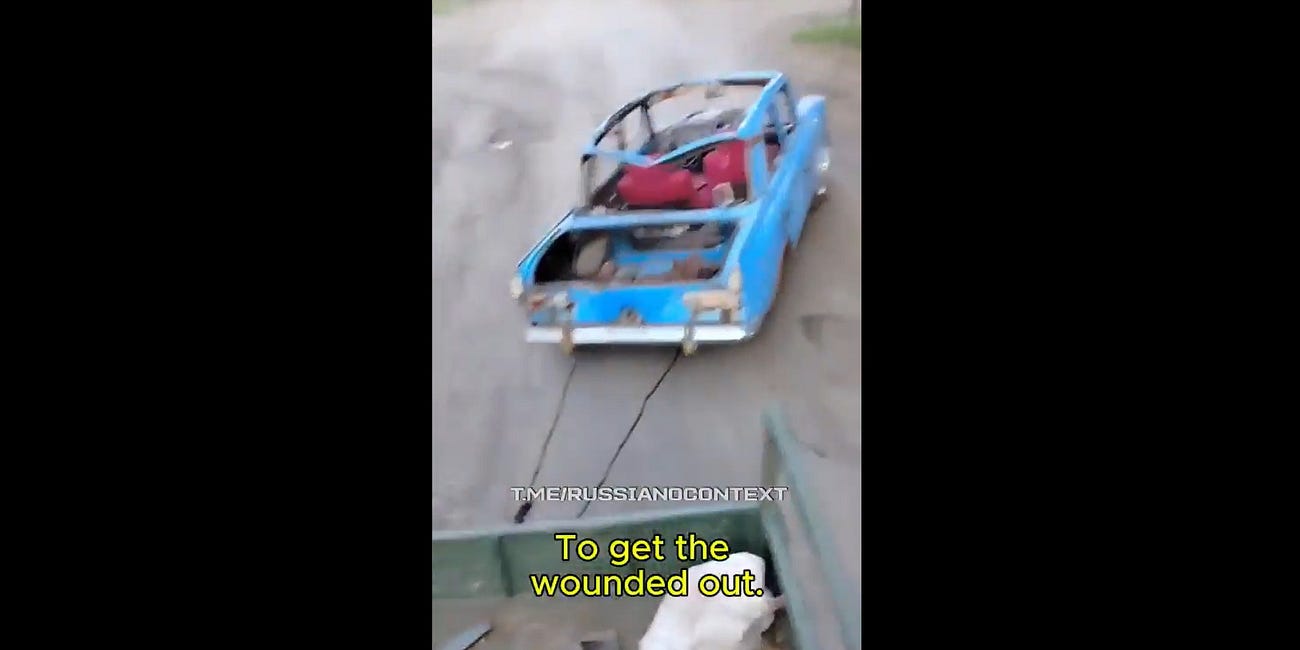A Russian Soldier Assaulted Ukrainian Positions on an Electric Unicycle
It ended badly for that one Russian, but that doesn't mean the Kremlin doesn't have a plan
There are off-road versions of the electric unicycle, a mode of transportation that’s popular with many younger urbanites owing to a unicycle’s inherent compactness and nimbleness.
But that’s doesn’t mean a unicycle makes a great assault vehicle. Unicycles, like all civilian vehicles, lack protection. They and their riders are vulnerable to small arms and shell fragments—to say nothing of mines, anti-tank missiles and explosives-laden drones.
So it should come as no surprise that a Russian reconnaissance trooper riding a unicycle across the shell-pocked, drone-patrolled no-man’s-land—somewhere along the 700-mile front line of Russian 39-month wider war on Ukraine—came to a bad end recently.
One explosion knocked the Russian off his unicycle. A second wounded him. A third, a direct him, blew him to bits. (See video below.)
In explosive death, the ill-fated unicyclist joins many unfortunate Russians who—riding into battle on electric scooters and motorcycles or in golf carts or compact cars—preceded him into oblivion.
Losing far more armored vehicles than it can replace with new production, or by restoring old Cold War vehicles, the Kremlin increasingly sends troops—recon troops, in particular—into battle with civilian vehicles. These unarmored vehicles now account for 90 percent of Russia’s vehicular losses.
Costly doctrine
But the Russians have bent their doctrine around their increasingly desperate de-mechanization problem. It’s now standard practice, as the wider war grinds into its fourth year, for Russian regiments to send under-trained, unprotected troops on “reconnaissance-by-force” missions in the early hours of a planned offensive.
The recon troops are disposable. And they tend to ride toward Ukrainian lines on whatever mode of transport they can steal, beg or scrounge. Now including $2,000 unicycles.
The recon troops “are ordered to advance towards where they assess Ukrainian positions to be, conducting reconnaissance by drawing fire,” Nick Reynolds and Jack Watling explained in a recent study for the Royal United Services Institute in London.
“If the group encounters resistance, Russian commanders assess where they believe the best lines of approach are, and in particular, where the boundaries between defensive units lie,” Reynolds and Watling added. “If Ukrainian positions are positively identified, sections are persistently sent forward to attack positions.”
So when Russians attack on scooters, motorcycles or unicycles, they’re usually just the first wave of a planned multiple-wave assault. The second wave won’t deploy its heavier, pricier—and increasingly rare—armored vehicles unless the lighter first wave succeeds.
It’s a try-and-try-again approach to mechanized warfare that costs Russia a thousand or more casualties a day, but still occasionally results in local breakthroughs that have allowed the Russians to capture a hundred or so square miles a month lately … in a country that sprawls across 233,000 square miles.
And incredibly, this de-mechanized form of warfare is actually sustainable for the Russians—for now, at least. The Kremlin has lately been recruiting 30,000 fresh troops every month, Gen. Christopher Cavoli, commander of U.S. Army forces in Europe, told U.S. lawmakers on April 3. That’s a thousand a day.
Russia logs a thousand casualties a day, too. But since many of the wounded eventually return to the front line, the Russian armed forces add more people every month than they lose.
As a result, the Russian force in Ukraine is slowly growing. It now numbers no fewer than 600,000 troops, “the highest level over the course of the war and almost double the size of the initial invasion force” in February 2022, Cavoli said.
How sustainable is this manpower growth? Record enlistments are “driven by high sign-on bonuses and speculation that the war will soon be over,” explained Janis Kluge, deputy head of the Eastern Europe and Eurasia Division at the German Institute for International and Security Affairs.
The bonuses may dry up as the increasingly debt-driven Russian war economy overheats amid collapsing oil prices. And the optimistic mood among everyday Russians could pivot on the their own tenuous financial fortunes.
All that is to say, a unicycle assault is consistent with current—and arguably sound—Russian doctrine, however unlikely it is for any individual unicycle soldier to survive an assault. But that doctrine is sound only as long as the Kremlin can recruit more troops than it loses.
That manpower surplus might not last.
Read more:
The Russians Have Lost So Many Compact Cars in Ukraine That They're Now Building New Cars From the Wreckage
In late 2023, the Ukrainian army’s 4th Tank Brigade went to extraordinary lengths to kluge together a unique T-72 from the wreckage of no fewer than three different tank models.






